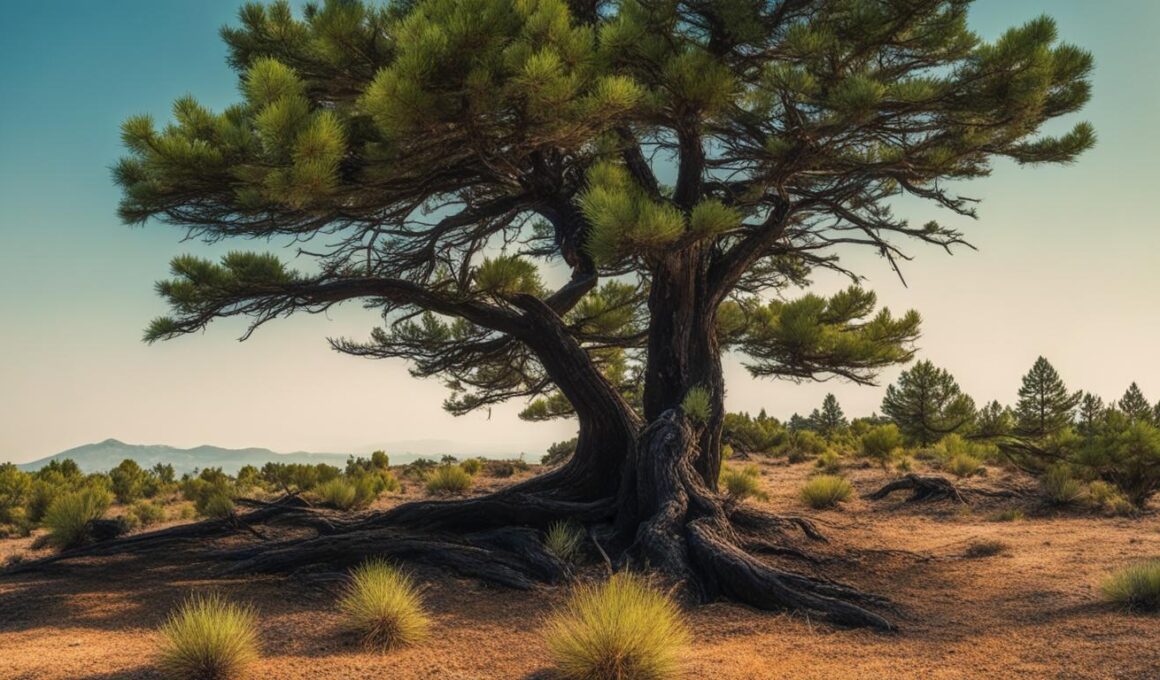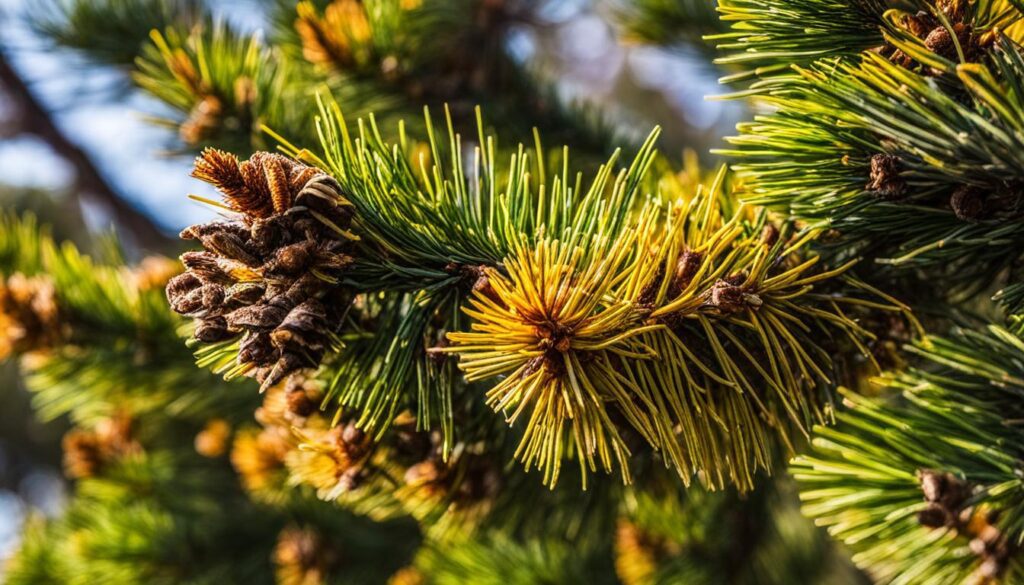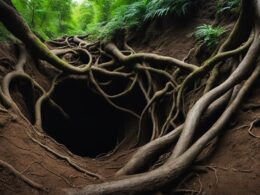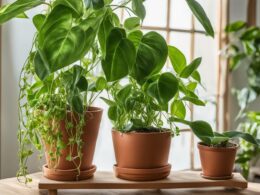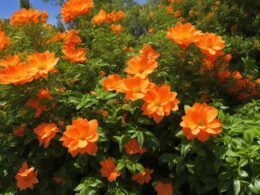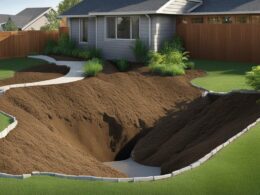If you’re a homeowner and notice that your pine tree is turning brown, it can be concerning. There are several common causes for this issue, and understanding them is crucial for restoring the health of your evergreen tree.
One of the main reasons for pine trees turning brown is environmental factors. Drought, extreme temperatures, poor soil conditions, and excessive sunlight can stress the trees, causing their needles to turn brown. It’s important to provide the right conditions and care to prevent this from happening.
Aside from environmental factors, needle diseases can also contribute to the browning of pine trees. These diseases can be caused by fungi, bacteria, or other environmental factors. Proper identification of pine trees and their common characteristics is essential for effectively diagnosing and addressing these issues.
In the following sections, we will delve deeper into the specific causes of pine tree browning, including needle diseases, like pine needle rust and pine needle blight, as well as pine wilt disease caused by pinewood nematodes. We will also discuss the solutions and management techniques, such as pruning infected branches, applying fungicides, and making environmental adjustments, to restore the health of your pine trees.
Identifying Pine Needle Diseases and Solutions
If you notice your pine tree’s needles turning brown, it could be a sign of needle diseases. Understanding these diseases and their solutions is crucial in restoring the health of your tree. Two common needle diseases that affect pine trees are pine needle rust and pine needle blight.
Pine needle rust is a fungal disease that manifests as small yellow to orange spots on the needles. As the disease progresses, these spots turn brown and cause the needles to fall off. It is important to identify and address this disease promptly to prevent further damage to your pine tree.
Pine needle blight, caused by different types of fungi, results in browning, wilting, and ultimately death of the needles. Pruning infected branches and applying fungicides can help manage both pine needle rust and pine needle blight, promoting the recovery of your tree’s needles.
Aside from needle diseases, environmental stressors can also lead to browning needles in pine trees. Drought stress, extreme temperatures, and poor soil conditions can all contribute to the decline of your tree’s health. To address these environmental stressors, proper watering, protection from extreme temperatures, soil testing, fertilization, and nutrient absorption are essential. By providing adequate care and addressing these stressors, you can help your pine tree regain its vitality.
Pine Wilt Disease and Other Pine Tree Diseases
Pine wilt disease is a common cause of pine trees turning brown and dying. This devastating disease is caused by a roundworm known as the pinewood nematode. These tiny nematodes feed on the water-conducting cells of the tree, disrupting the flow of water and nutrients. As a result, the tree’s needles turn brown, wither, and eventually die.
The spread of pine wilt disease is facilitated by the pine sawyer beetle. This beetle lays its eggs in dead or declining pine trees, introducing the nematodes into the tree’s system. Once inside, the nematodes rapidly multiply, multiplying the damage caused, and increasing the likelihood of other trees becoming infected.
To prevent further spread of the disease, infected pine trees should be promptly removed and disposed of properly. This helps prevent the pine sawyer beetles from laying their eggs in the decaying wood and spreading the nematodes to nearby healthy trees.
In addition to pine wilt disease, there are other common pine tree diseases to be aware of. Dothistroma needle blight, caused by a fungal pathogen, leads to browning and premature defoliation of needles. Brown spot needle blight, another fungal disease, causes brown spots on the needles and eventually leads to their death. Lophodermium needlecast, also caused by a fungus, results in purple-brown discoloration and premature shedding of needles.
To manage these diseases, it is important to promptly remove and destroy infected branches. Additionally, applying fungicides at the appropriate times can help prevent the spread of fungal pathogens and protect the health of the pine trees.
How to Save a Dying Pine Tree
When dealing with a dying pine tree, it is essential to act promptly in order to save it. The first step is to identify the specific problem that is causing the browning. It could be a needle disease, environmental stress, or other factors. By accurately diagnosing the issue, you can implement the appropriate course of action to address it.
If the problem is related to needle diseases, such as pine needle rust or pine needle blight, pruning affected branches and applying fungicides can help manage and control the spread of the disease. Regular treatment and monitoring are essential to ensure the tree’s recovery.
In addition to disease management, proper care for a dying pine tree also involves addressing environmental stressors. Improving the soil quality, providing adequate watering, and protecting the tree from extreme temperatures are crucial adjustments to consider. By creating a favorable environment for the tree’s growth, you enhance its chances of survival.
However, despite your best efforts, there may be instances where saving the pine tree becomes impossible. In such cases, it is important to have the tree safely removed to prevent any further complications. Considering replacing it with a healthier and more suitable tree species is another suitable option to maintain the beauty and integrity of your landscape.
Could Termites Cause Pine Trees to Turn Brown?
Yes, signs of termites in trees could definitely lead to the browning of pine trees. These pests feed on the wood, causing damage to the tree’s structure and ability to take in nutrients. If you notice signs of termites in trees, it’s important to address the issue promptly to prevent further damage.





